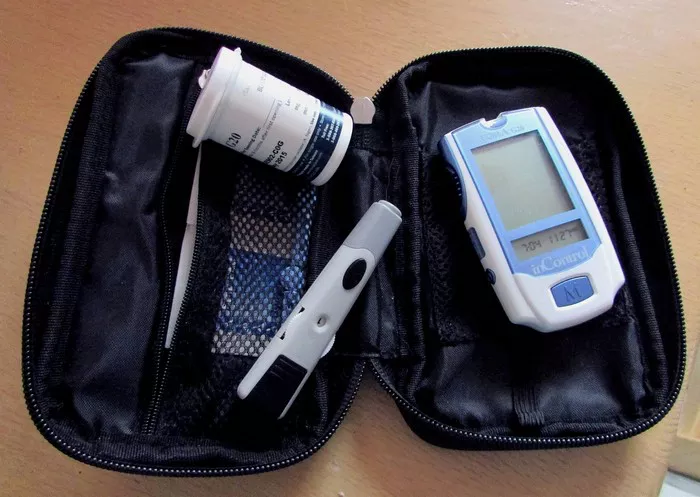Diabetes is a complex metabolic disorder characterized by abnormal glucose metabolism, and insulin resistance plays a crucial role in its pathogenesis. Homeostasis Model Assessment of Insulin Resistance (HOMA-IR) is a valuable tool used in clinical and research settings to assess insulin sensitivity and resistance. In this article, we will delve into the intricacies of HOMA-IR, exploring its purpose, calculation, interpretation, clinical significance, limitations, and clinical applications.
Explanation of HOMA-IR
HOMA-IR is a mathematical model designed to estimate insulin resistance based on fasting glucose and insulin levels. Its purpose is to provide clinicians and researchers with a simple and non-invasive method for assessing insulin sensitivity and resistance. By analyzing fasting blood samples, HOMA-IR offers valuable insights into the metabolic health of individuals and can help identify those at risk for metabolic disorders such as type 2 diabetes.
Calculation of HOMA-IR
The calculation of HOMA-IR involves multiplying fasting insulin (measured in mIU/L) by fasting glucose (measured in mmol/L) and then dividing the product by a constant. The formula typically used is:
HOMA-IR = (Fasting Insulin × Fasting Glucose) / 22.5
For example, if a person’s fasting insulin level is 10 mIU/L and their fasting glucose level is 5 mmol/L, the calculation would be as follows:
HOMA-IR = (10 × 5) / 22.5 = 2.22
This resulting value represents the individual’s HOMA-IR score, which provides an estimation of their degree of insulin resistance.
Interpreting HOMA-IR values involves understanding their significance in the context of insulin resistance. Generally, lower HOMA-IR values indicate greater insulin sensitivity, while higher values suggest insulin resistance. Reference ranges for HOMA-IR values may vary, but typically values below 2.0 are considered normal, values between 2.0 and 2.9 are borderline, and values above 2.9 are indicative of insulin resistance.
Reference Ranges
Reference ranges for HOMA-IR values may vary depending on factors such as age, sex, ethnicity, and population studied. Therefore, it is essential to use reference values appropriate for the specific population being assessed. Clinicians and researchers may refer to established guidelines or population-specific reference ranges when interpreting HOMA-IR values.
Clinical Significance
HOMA-IR values hold significant clinical implications for assessing insulin resistance and its impact on metabolic health. Insulin resistance is a key factor in the development of type 2 diabetes, metabolic syndrome, cardiovascular disease, and other metabolic disorders. By identifying individuals with insulin resistance early on, healthcare professionals can implement preventive measures and interventions to mitigate the risk of these conditions.
Factors Affecting HOMA-IR
Several factors can influence HOMA-IR values, including obesity, physical inactivity, medication use, and medical conditions such as polycystic ovary syndrome (PCOS) and non-alcoholic fatty liver disease (NAFLD). Obesity, in particular, is strongly associated with insulin resistance, as excess adipose tissue contributes to dysregulated lipid metabolism and inflammation, further exacerbating insulin resistance.
Limitations of HOMA-IR
Despite its utility, HOMA-IR has certain limitations that should be acknowledged. One limitation is its reliance on fasting glucose and insulin levels, which may not fully capture postprandial glucose metabolism or dynamic changes in insulin sensitivity. Additionally, HOMA-IR values may vary depending on factors such as time of day, diet, and stress levels, leading to variability in results. Furthermore, HOMA-IR may lack sensitivity in certain populations, such as those with impaired fasting glucose or insulin secretion.
Clinical Use and Applications
HOMA-IR is widely used in both research and clinical practice for assessing insulin sensitivity, monitoring disease progression, and guiding treatment decisions. In research settings, HOMA-IR is employed to investigate the pathophysiology of insulin resistance and metabolic disorders, as well as to evaluate the efficacy of interventions aimed at improving insulin sensitivity. In clinical practice, HOMA-IR can help healthcare providers identify individuals at risk for type 2 diabetes and cardiovascular disease, allowing for early intervention and personalized treatment strategies.
Alternative Methods
In addition to HOMA-IR, several alternative methods are available for assessing insulin resistance, including oral glucose tolerance tests (OGTT), hyperinsulinemic-euglycemic clamp studies, and other surrogate markers such as the Matsuda Index and Quantitative Insulin Sensitivity Check Index (QUICKI). Each method has its advantages and limitations, and healthcare professionals may choose the most appropriate method based on clinical context, availability, and patient characteristics.
Consultation with Healthcare Providers
While HOMA-IR provides valuable insights into insulin resistance, it is essential to interpret results in the context of individual patient characteristics and clinical findings. Therefore, it is recommended to consult with healthcare providers for proper interpretation of HOMA-IR values and personalized management of insulin resistance. Healthcare professionals can help patients understand their HOMA-IR results, assess their overall metabolic health, and develop a comprehensive treatment plan tailored to their needs.
Conclusion
In conclusion, HOMA-IR is a valuable tool for assessing insulin resistance and metabolic health. By analyzing fasting glucose and insulin levels, HOMA-IR provides clinicians and researchers with valuable insights into insulin sensitivity and resistance. Understanding the purpose, calculation, interpretation, clinical significance, limitations, and clinical applications of HOMA-IR is essential for healthcare professionals and researchers working in the field of diabetes and metabolic disorders. By leveraging HOMA-IR and other complementary methods, healthcare providers can identify individuals at risk for metabolic disorders, implement preventive measures, and optimize treatment strategies to improve patient outcomes.
Related Topics:
What Chinese Medicine Is Good For Insulin Resistance?
























